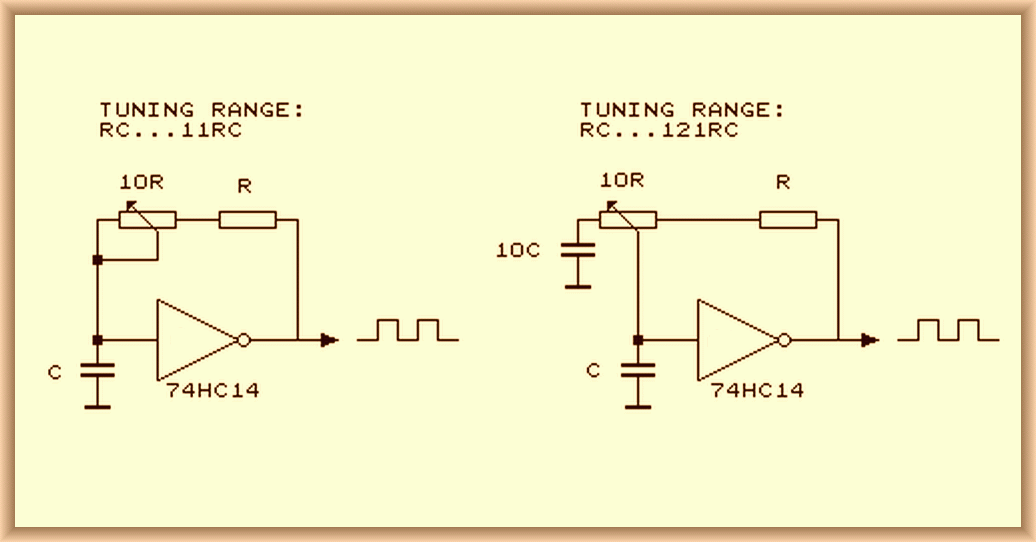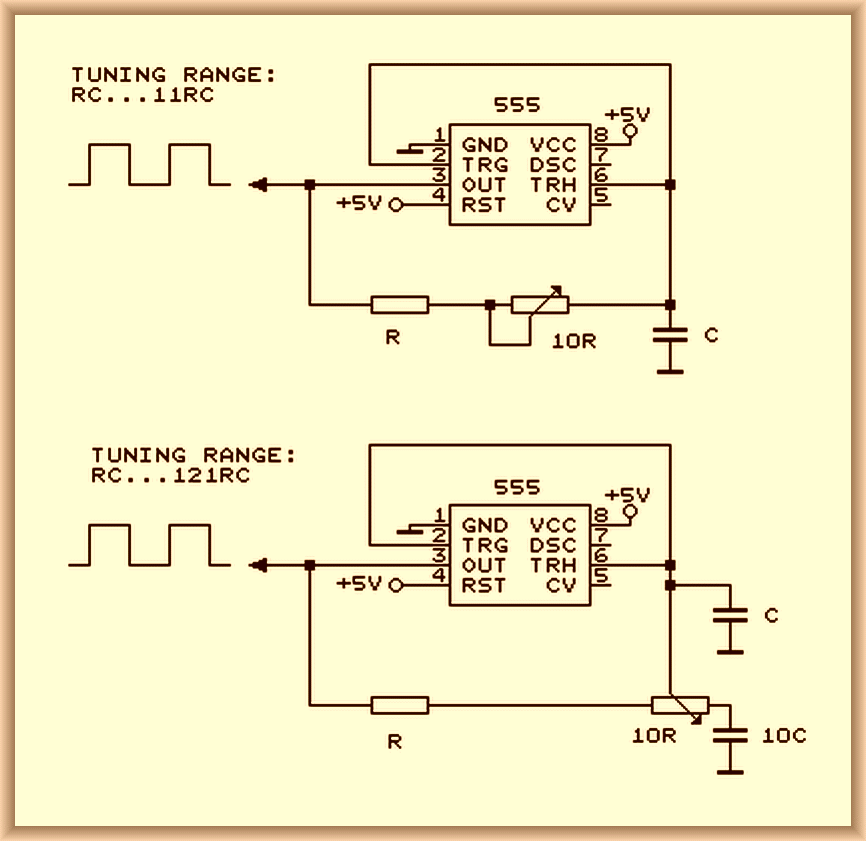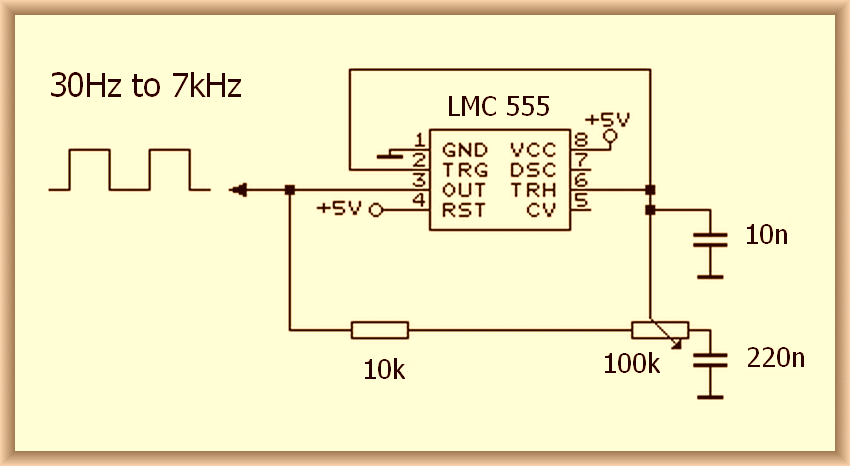Subpage:Widerange tuning for RC-oscillators (using one potmeter)
design 2023
Introduction:
Increase potentiometer frequency control span with a factor of 10 or more by wiring it up differently.
This approach can also be used to extend the range of a pulse width/delay control.
Example circuits using a 555 oscillator and a schmitt-trigger inverter oscillator are shown.
Advantage compared to standard circuits: The increased span adds lower frequency range without
sacrifying control resolution at the high end.
Examples of standard circuits and the extended tuning range version:


Limitation of the standard approach:
The oscillator frequency is set by the RC value. In standard circuits the R is made variable using a
potentiometer in series with a smaller fixed resistor that limits the loading of the chip used.
Drawback is that when trying to create a large span like 1:100 you run into problems.
Example: a potmeter of 100k and a series resistor of 1k.
Then the highest frequency is already lowered by 50%
when lowering the potmeter by just 1% which makes it hardly usable.
Improvement by the new approach (see circuit examples and demo movie):
Instead of using the potmeter as a 2-wire varable resistor, it is used as a 3-terminal device
that both changes resistance and fades over to an additional larger capacitor connected at
it's high resistance endpoint. This way the frequency tuning range can be enlarged by a factor of 10
or more towards lower frequencies without loosing resolution at the high side of the frequency range.
For example: if we use the potmeter 100k again we can add a 10k series resistor, a 10C added endpoint
capacitor, and get the 1:100 range. In this case the highest frequency is lowered by 50% only after
lowering the potmeter by 10%.
Circuit examples:

demo movie:see and hear this 555 oscillator circuit with a 30Hz to 7kHz potmeter tuning range
PSPICE simulations of a schmitt-trigger inverter oscillator with 1:1000 tuning range.
YouTube link for this project


